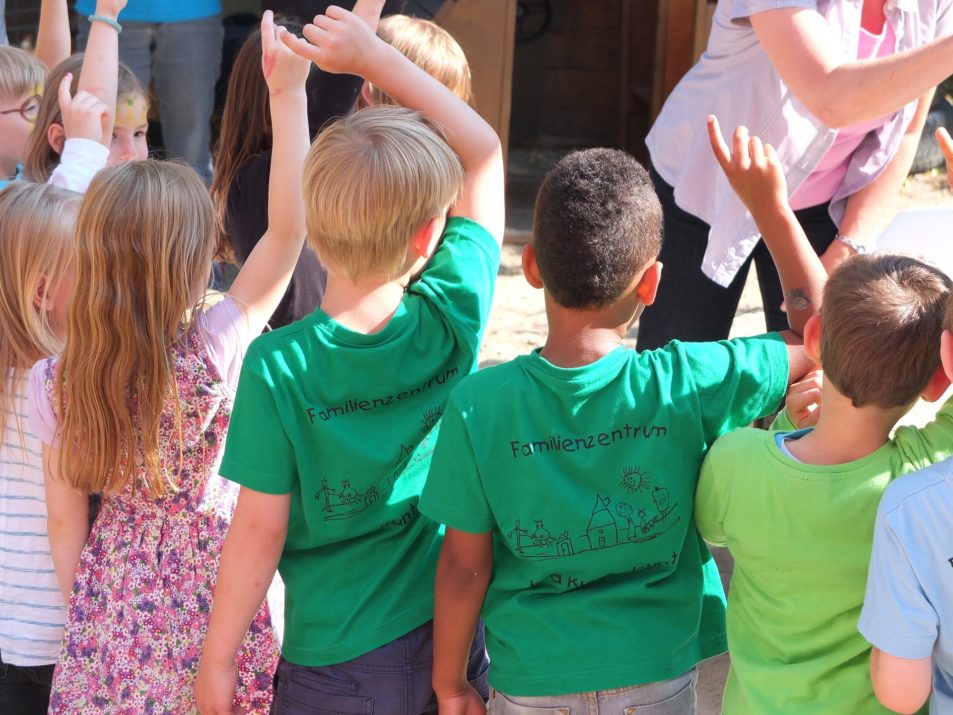
Tolerance plays an important role in promoting social equality at school. In addition to showing students how to interact with others, it also teaches them how to learn from people who are different from themselves. Despite the importance of teaching tolerance, however, some educators skirt around the subject because it’s difficult, uncomfortable or seemingly irrelevant.
Luckily, there are many tools and resources that make it easier to teach and promote tolerance among students of any age. Here’s how teachers can incorporate tolerance into everyday learning through lessons, books and inclusive activities.
Lead by Example
A teacher’s role is to lead by example. As pointed out by Parenting Today, a product of the Child Development Institute, kids listen to and learn from their elders. By being mindful of the words and terms that you use, you can set a good example for children in your class.
You can also set a positive example by making a point to call out intolerant behavior as wrong; don’t mistake true curiosity for a negative behavior, though. Social worker Andy Smithson says that children are naturally curious, yet non-judgemental. They often ask questions about the way a person looks, wondering why they’re different. Instead of feeling uncomfortable, teachers should take advantage of this opportunity to explain differences.
Diversity and Teaching Tolerance
Tolerance is an essential lifelong skill that is carefully learned through lessons and action.
A helpful resource for teaching tolerance is the Diversity Council, a community-based organization that focuses on embracing diversity and inclusiveness. The Diversity Council’s list of activities spans a range of inclusivity topics, including ability, prejudice, human rights, gender, race, cultural diversity and more. There are lesson plans available for elementary, middle and high school students, helping teachers of all grades spread tolerance in the classroom.
Another resource is the Choices Program, a Brown University project that creates inclusive lessons based on history and current issues. The Choices Program explains that educators can encourage students to discuss race on a personal level while sharing their understandings of personal identity. Although this may be uncomfortable and unfamiliar for both teachers and students, teachers should do their part to find tools and tips that can make teaching tolerance easier and more approachable.

Inclusive Books
One of the easiest and most affordable ways to incorporate tolerance into learning is to choose inclusive reading materials. Since teachers already have to buy books for their classroom, being mindful about how these books represent people can make all the difference.
Anti-bias education author, speaker, and consultant Louise Derman-Sparks offers a guide on selecting classic anti-bias children’s books. She says that this list of books reflects “the attitudes in our society about diversity, power relationships among different groups of people, and various social identities (e.g., racial, ethnic, gender, economic class, sexual orientation, and disability).”
Another helpful resource for inclusive classroom books is Rich in Color, which is dedicated to reviewing and promoting young adult books that represent people from First and Native Nations. Some of the books that Rich in Color suggests are fiction, which can cause a hiccup for teachers managing strict standards like Common Core. However, Rich in Color suggests supplementing the fiction materials with non-fiction articles that support and relate to the material. By reading about fictional characters from diverse backgrounds, and then learning about similar people in real life, students gain more perspectives and become more open minded.
Primary Sources
Nonfiction books and primary sources also play a vital role in teaching tolerance. One classic example of how to teach real world tolerance through nonfiction reading is The Diary of Anne Frank. The Alabama Learning Exchange says that this book enriches student altruism while opening up conversations about modern day genocide, discrimination and the impact of different peoples on social and cultural patterns.
Primary sources also serve as an important tool for teaching students about history through a culturally sensitive lens. For example, parent and teacher community Rocketship suggests turning to the National Archives for access to electronic versions of primary sources. Here, students can access resources that allow them to tour the March on Washington, read letters written to and from Dr. Martin Luther King Jr., and make personal connections to King’s “I Have a Dream” speech by thinking of their own dreams.
Educators can also turn to a website called Americans Who Tell The Truth, organized by activist and social justice advocate Robert Shetterly. These lessons draw upon real world events, like The Ludlow Massacre, The Singing Strike and Women’s Suffrage, to ensure that American history is taught truthfully. The goal of Shetty’s site is to highlight Americans that “courageously address issues of social, environmental, and economic fairness” in order to create a new generation of outspoken, altruistic citizens.
Creating Safe Spaces
Sometimes, inclusive books and lesson plans aren’t enough to help students who are feeling stressed and helpless due to current events.
Activist, researcher and civil right advocate Dena Simmons explains the importance of creating a safe space for all students in the classroom. Students should openly discuss what a safe space looks and feels like. Then, the class can work together to create an action plan around how they can each support one another’s safe space. This practice teaches social awareness and empathy, which are critical aspects of tolerance.
Teachers can also use history lessons to teach about instances of racism in America’s past. Teacher lesson plan resource Teacher Planet offers a lesson plan called Changing Attitudes in America, which is designed to help students confront racism and instances of stereotyping. This unit focuses on open discussion and collaboration to help students share with and learn from one another.

Group Activities
Tolerance is something that must manifest itself in everyday actions, according to Scott Weigle at elementary classroom blog Classroom Caboodle. Weigle says that partnering students during reading lessons and projects can foster inclusivity and acceptance. Weigle adds that he often asks students to repeat a classroom mantra: “we are willing to work with anyone!” Giving students this mindset reminds them that courteous cooperation is necessary, not optional. When young students know that they’re expected to treat one another equally, it helps lay the foundation for acceptance as they grow up.
Teachers can also refer to an education theory called The Jigsaw Classroom writes Elissa Nadworny at NPR. Designed to reduce prejudice in Texas schools during desegregation, its creator, psychologist Elliot Aronson, came up with the idea that “maybe we could get kids to listen to each other and respect each other if we gave them group projects where they had to put together pieces, just like a jigsaw puzzle.”
The thought process here is that when each student is responsible for bringing an important piece of the project to the table, the playing ground is levelled and everyone is seen as equal. In other words, the students learn that they cannot succeed as a group without the equal weight of everyone else in that group. As a result, each student listens more to their peers and values their contributions.
Yoga and Mindfulness
Mindfulness is essential to understanding, hearing and listening to those around you. However, mindfulness can be hard to teach – especially among younger children. That’s why Lynea Gillen created Yoga Calm, a yoga program that helps children practice mindfulness, social skills, and emotional coping.
Gillen says that she often asks her students to practice empathy by closing their eyes and thinking about other people who may be having a hard time. By connecting to their own breaths and heartbeats while thinking of others, children learn how to feel empathetic towards the challenges of others. This is a short and simple group activity that can be practiced at any part of the day to give students a relaxing mental break that builds mindfulness.


What do you think?